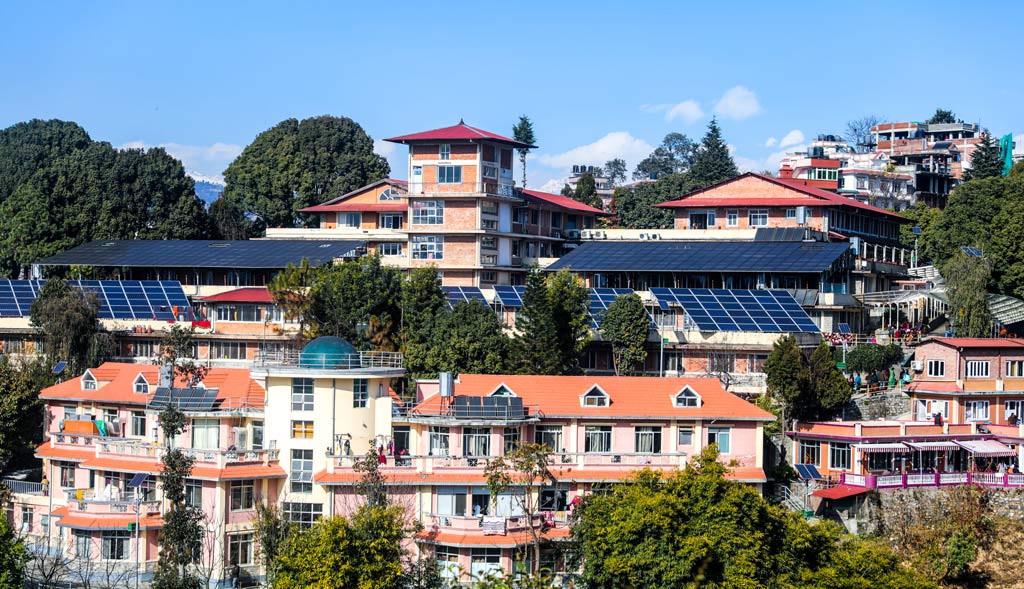
Best Medical Colleges in Nepal: MBBS Admission Guide 2025
Embarking on the journey to become a medical professional is a momentous decision, and choosing the right institution is paramount to your success. Nepal has steadily gained recognition as a preferred destination for aspiring MBBS students, offering a unique blend of affordable education, high-quality training, and vibrant cultural immersion. This comprehensive guide will navigate you through the top medical colleges in Nepal, the intricacies of the MBBS admission process for 2025, and the associated fee structures, empowering you to make a well-informed choice.
Why Choose Nepal for Your MBBS Studies?
Nepal presents several compelling advantages for students seeking an MBBS degree:
Affordable Fees: Your Pathway to Quality Education Without Breaking the Bank
One of the most significant attractions of pursuing an MBBS in Nepal is the comparatively lower tuition fees compared to many other countries renowned for medical education. This cost-effectiveness does not compromise the quality of education, making it an exceptionally appealing option for international students seeking value and excellence. The fee structures are designed to be accessible, ensuring that financial constraints are less of a barrier to achieving your medical aspirations.
Globally Recognized Quality Education: A Foundation for International Success
Medical colleges in Nepal adhere to rigorous academic standards and are recognized by prominent international bodies such as the Medical Council of India (MCI) and the World Health Organization (WHO). This global recognition ensures that your MBBS degree from Nepal will hold value and credibility worldwide, opening doors to diverse career opportunities internationally. The curriculum and clinical training are designed to equip graduates with the necessary knowledge and skills to excel in the global healthcare landscape.
Rich Cultural Exposure: A Holistic Learning Experience Beyond the Classroom
Studying in Nepal offers a unique opportunity to immerse yourself in a rich and diverse cultural tapestry. Interacting with a multicultural community of fellow students and local populations fosters personal growth, enhances cross-cultural communication skills, and broadens your perspectives. This exposure contributes to a well-rounded educational experience that extends far beyond the confines of the lecture hall and laboratory.
Exploring the Top Medical Colleges in Nepal
Nepal boasts several esteemed medical colleges, each with its unique strengths and offerings. Here’s a closer look at some of the leading institutions:
1. Tribhuvan University – Institute of Medicine (IOM)
- Established: 1959
- Affiliation: Institute of Medicine (IOM)
- Location: Kathmandu
- Key Highlights: Tribhuvan University is a pioneer in medical education in Nepal, renowned for its comprehensive and well-structured curriculum. Its Institute of Medicine (IOM) benefits from state-of-the-art facilities and a long-standing tradition of academic excellence. The university’s extensive network of teaching hospitals provides students with ample clinical exposure and hands-on learning opportunities.

2. Kathmandu University – Dhulikhel Medical Institute
- Established: 1991
- Affiliation: Dhulikhel Medical Institute
- Location: Dhulikhel
- Key Highlights: Kathmandu University is known for its innovative teaching methodologies and a strong emphasis on research. The Dhulikhel Medical Institute, affiliated with the university, is particularly recognized for its community-oriented approach to healthcare and its commitment to producing socially responsible medical professionals. The institute’s focus on practical learning and research ensures that students are well-prepared for the challenges of modern medicine.

3. B.P. Koirala Institute of Health Sciences (BPKIHS)
- Established: 1993
- Affiliation: Autonomous
- Location: Dharan
- Key Highlights: BPKIHS is an autonomous institution that offers a holistic approach to medical education. It is particularly lauded for its community-based health programs and its focus on addressing the healthcare needs of the local population. The institute’s integrated curriculum and emphasis on practical skills development ensure that graduates are competent and compassionate healthcare providers.
4. Pokhara University – Manipal Teaching Hospital
- Established: 1997
- Affiliation: Manipal Teaching Hospital
- Location: Pokhara
- Key Highlights: Pokhara University, in collaboration with Manipal Teaching Hospital, provides students with excellent practical training in a serene and conducive learning environment. Manipal Teaching Hospital’s modern infrastructure and experienced faculty contribute significantly to the quality of medical education offered. The university’s focus on a balanced academic and clinical curriculum ensures that students receive comprehensive training.

Navigating the MBBS Admission Process in Nepal for 2025
Understanding the admission process is crucial for a smooth application journey. Here’s a breakdown of the key aspects for the 2025 intake:
Essential Eligibility Criteria
Prospective MBBS students in Nepal typically need to meet the following criteria:
- Academic Qualifications: A minimum of 50% aggregate marks in Physics, Chemistry, and Biology (PCB) in their higher secondary education (10+2 or equivalent). Some colleges may have slightly varying percentage requirements. For reserved categories, the minimum requirement is often around 40%.
- NEET Qualification (for Indian Students): Indian students seeking admission to MBBS programs in Nepal are generally required to have qualified in the National Eligibility cum Entrance Test (NEET). Specific qualifying scores may vary, so it’s essential to check the individual college requirements.
- Passport and Documentation: A valid passport and other necessary documents, such as academic transcripts, character certificates, and photographs, are mandatory for international students.
Step-by-Step Guide to the Admission Process
- Application Submission: The initial step involves applying through the official website of the respective medical college you are interested in. Ensure you carefully fill out all the required details and upload the necessary documents as specified.
- Document Verification: Once your application is submitted, the college will review your documents to ensure they meet the eligibility criteria. You may be required to submit original documents for physical verification at a later stage.
- Entrance Examination: Some medical colleges in Nepal conduct their own entrance examinations to assess the aptitude and knowledge of the applicants. The syllabus and format of these exams will be available on the college websites. Be prepared to study relevant subjects and appear for the test at the designated center.
- Admission Confirmation: Based on your application, document verification, and entrance exam performance (if applicable), the college will release a merit list of selected candidates. If your name appears on the list, you will need to secure your seat by paying the required admission fee within the stipulated timeframe.
Understanding the Fees Structure for MBBS in Nepal
The cost of pursuing an MBBS degree is a significant factor for many students. Here’s an approximate overview of the annual tuition fees at some of the top medical colleges in Nepal:
| College | Annual Tuition Fee (Approx) |
|---|---|
| Tribhuvan University | NPR 40-50 Lakhs |
| Kathmandu University | NPR 30-40 Lakhs |
| BPKIHS | NPR 35-45 Lakhs |
| Pokhara University | NPR 25-35 Lakhs |
Note: These figures are approximate annual tuition fees and may vary slightly depending on the specific college, year of admission, and other factors. It’s crucial to check the official website of the respective colleges for the most up-to-date and accurate fee structure, including any additional charges such as hostel fees, examination fees, and other miscellaneous expenses.
Key Tips for Choosing the Right Medical College for You
Selecting the ideal medical college is a critical decision that will significantly impact your academic and professional journey. Consider the following factors to make an informed choice:
Accreditation and Recognition: Ensuring Global Acceptance
Prioritize colleges that are recognized by the Medical Council of India (MCI) and the World Health Organization (WHO). This accreditation ensures that your degree will be globally accepted and that the institution adheres to international standards of medical education.
Infrastructure and Facilities: A Conducive Learning Environment
Look for colleges that boast modern infrastructure, including well-equipped laboratories, comprehensive libraries with a vast collection of medical resources, and adequate clinical exposure through affiliated hospitals. A supportive and well-resourced learning environment is essential for your academic growth.
Location and Environment: Balancing Academics and Personal Well-being
Consider the location of the college and its surrounding environment. Proximity to well-established hospitals for clinical training is crucial. Additionally, think about the cultural exposure and the overall living environment to ensure a comfortable and enriching experience outside of your studies.
Conclusion: Your First Step Towards a Medical Career in Nepal
Nepal offers a compelling and rewarding pathway for aspiring medical professionals. With its esteemed medical colleges, structured admission processes, and relatively affordable fee structures, it presents a unique opportunity to pursue your MBBS dreams. By carefully considering the information provided in this guide and conducting thorough research on individual colleges, you can take the first confident step towards a fulfilling and impactful medical career.
Ready to embark on your medical journey in Nepal? Visit the official websites of the mentioned colleges and connect with educational counselors for personalized guidance and the latest admission updates. Your future in medicine awaits!
Click here to take a quick MBBS entrance quiz exam: Link


